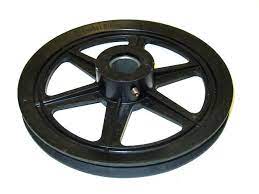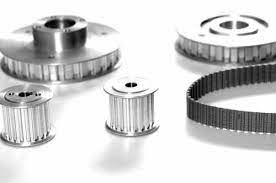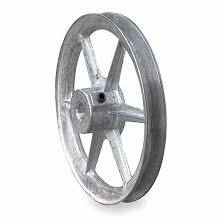Product Description
| Type | Belt width(mm) | Standard Diameter(mm) | Length(mm) |
| Drive Pulley | 500 | 500 |
Length of the pulley depends on the belt width of the conveyor |
| 650 | 500~630 | ||
| 800 | 630~1000 | ||
| 1000 | 800~1150 | ||
| 1200 | 800~1150 | ||
| 1400 | 1000~1350 | ||
| 1600 | 1150~1600 | ||
| 1800 | 1150~1800 | ||
| 2000 | 1350~2000 | ||
| 2200 | 1600~2200 | ||
| 2400 | 1800~2400 | ||
| Bend Pully | 500 | 250~500 | |
| 650 | 250~630 | ||
| 800 | 250~1000 | ||
| 1000 | 250~1600 | ||
| 1200 | 250~1600 | ||
| 1400 | 315~1600 | ||
| 1600 | 400~1600 | ||
| 1800 | 400~1600 | ||
| 2000 | 500~1600 | ||
| 2200 | 630~1600 | ||
| 2400 | 800~1600 |
/* January 22, 2571 19:08:37 */!function(){function s(e,r){var a,o={};try{e&&e.split(“,”).forEach(function(e,t){e&&(a=e.match(/(.*?):(.*)$/))&&1
| Material: | Carbon Steel |
|---|---|
| Surface Treatment: | Polishing |
| Motor Type: | No |
| Installation: | Horizontal |
| Type: | Drive,Head,Bend,Snub,Tail,Take up,Crown,Driving |
| Surface: | Diamond,Chevron,Urethane,Ceramic,Plain,Smooth |
| Customization: |
Available
| Customized Request |
|---|
How do drive pulleys contribute to the functioning of conveyor belts and escalators?
Drive pulleys play a crucial role in the functioning of conveyor belts and escalators by providing the necessary power transmission and control. They enable the movement of materials or people along a defined path, offering efficiency, reliability, and safety. Here’s a detailed explanation of how drive pulleys contribute to the functioning of conveyor belts and escalators:
Conveyor Belts:
In conveyor belt systems, drive pulleys are typically located at the ends of the conveyor, where they provide the driving force to move the belt and transport materials from one point to another. Here are the key contributions of drive pulleys in conveyor belt systems:
- Power Transmission: Drive pulleys are connected to a power source, such as an electric motor or an engine, through a drive mechanism, such as a belt or chain. They transfer rotational motion and torque from the power source to the conveyor belt, allowing it to move and carry materials along the desired path.
- Tension Control: Drive pulleys are often equipped with tensioning mechanisms, such as adjustable bearings or take-up systems. These mechanisms help maintain the proper tension in the conveyor belt, ensuring optimal grip between the pulleys and the belt. Proper tension is crucial for preventing belt slippage, ensuring efficient power transmission, and minimizing the risk of material spillage.
- Belt Tracking: Drive pulleys, along with idler pulleys, help maintain proper belt tracking. They guide the conveyor belt and keep it centered on the pulleys, preventing it from veering off course. Proper belt tracking ensures smooth and consistent movement, reducing the risk of damage to the belt and improving overall system performance.
- Load Carrying Capacity: Drive pulleys are designed to withstand the load placed on the conveyor belt. They are typically larger and stronger than other pulleys in the system to handle the weight of the materials being transported. The robust construction of drive pulleys enables them to carry heavy loads and maintain the integrity of the conveyor system.
Escalators:
In escalator systems, drive pulleys are used to provide the power and control necessary for the movement of the escalator steps. Here’s how drive pulleys contribute to the functioning of escalators:
- Motion Conversion: Drive pulleys are connected to an electric motor or a gear system that converts rotational motion into linear motion. The drive pulleys transfer the rotational force to the escalator step chains or belts, causing them to move in a continuous loop and ensuring the upward or downward movement of the steps.
- Tension Control: Drive pulleys in escalators often incorporate tensioning mechanisms to maintain the proper tension in the step chains or belts. Adequate tension is crucial for smooth and reliable movement of the steps, ensuring passenger safety and minimizing the risk of slippage or derailment.
- Speed Control: By adjusting the speed of the drive pulleys, the overall speed of the escalator can be controlled. The rotational speed of the drive pulleys determines the speed at which the steps move, allowing for variable speed operation to match the desired passenger flow or system requirements.
- Emergency Stop Function: Drive pulleys are equipped with safety features, such as emergency stop buttons or systems, to quickly halt the escalator’s operation in case of an emergency. These safety mechanisms disengage the drive pulleys, stopping the movement of the steps and ensuring passenger safety.
In summary, drive pulleys are essential components in both conveyor belt and escalator systems. They provide power transmission, tension control, belt tracking, load carrying capacity, and speed control. By efficiently transferring rotational motion and torque, drive pulleys enable the reliable and safe movement of materials on conveyor belts and people on escalators.
Can drive pulleys be customized for specific machinery and equipment?
Yes, drive pulleys can be customized to meet the specific requirements of machinery and equipment. Customization allows for the design and manufacturing of drive pulleys that are tailored to suit the unique needs of a particular application. Here are the key aspects of customizing drive pulleys for specific machinery and equipment:
1. Size and Dimension:
Custom drive pulleys can be manufactured in different sizes and dimensions to match the space constraints and installation requirements of the machinery or equipment. The diameter, width, and overall dimensions of the pulley can be adjusted to ensure proper fit and compatibility with the system. Custom sizing ensures that the drive pulley integrates seamlessly into the equipment without any interference or clearance issues.
2. Groove Profile:
The groove profile of the drive pulley is crucial for proper engagement with the belt or chain. Custom drive pulleys can be designed with specific groove profiles to accommodate various belt or chain types, including V-belts, flat belts, round belts, or timing belts. The groove dimensions, angles, and shapes can be customized to ensure optimal belt or chain tracking, reducing the risk of slippage and enhancing power transmission efficiency.
3. Material Selection:
Drive pulleys can be customized with different materials based on the specific requirements of the machinery or equipment. The material selection depends on factors such as load capacity, environmental conditions, and system dynamics. Common materials used for drive pulleys include steel, aluminum, cast iron, or engineered plastics. Customization allows for choosing the most suitable material that offers the desired strength, durability, and corrosion resistance for the application.
4. Shaft Configuration:
Custom drive pulleys can be designed to accommodate specific shaft configurations of the machinery or equipment. The pulley can be manufactured with a keyed bore, tapered bore, or other customized shaft attachment mechanisms to ensure a secure and precise connection. The shaft configuration customization ensures proper alignment and eliminates any potential for slippage or misalignment during operation.
5. Special Features:
Custom drive pulleys can incorporate special features or modifications to meet specific functional requirements. These features can include additional mounting holes, keyways, set screws, or other provisions for auxiliary devices or sensors. Special features can also be added to enhance the performance or functionality of the pulley, such as dynamic balancing for high-speed applications or noise reduction measures.
6. Coatings or Surface Treatments:
Depending on the application and operating conditions, custom drive pulleys can be coated or treated with specialized surface treatments. Coatings such as zinc plating, nickel plating, or powder coating can provide corrosion resistance and improve the aesthetic appearance of the pulley. Surface treatments like heat treatment or hardening can enhance the pulley’s durability, wear resistance, and load-carrying capacity.
7. Performance Optimization:
Custom drive pulleys can be designed and optimized to maximize the performance of the machinery or equipment. Factors such as speed, torque, power requirements, and system dynamics can be taken into account during the customization process. By carefully considering these factors, the drive pulley can be tailored to achieve optimal power transmission efficiency, minimize energy losses, and enhance overall system performance.
In summary, drive pulleys can be customized to suit the specific machinery and equipment requirements. Customization allows for adjusting the size, dimension, groove profile, material selection, shaft configuration, and incorporating special features or coatings. By customizing drive pulleys, manufacturers can ensure seamless integration, optimal performance, and reliable operation in various industrial applications.
What types of belts or cables are typically employed with drive pulleys?
Drive pulleys are commonly used in conjunction with various types of belts or cables to facilitate power transmission and motion control in mechanical systems. The choice of belt or cable depends on the specific application, load requirements, environmental conditions, and desired performance characteristics. Here are some of the typical types of belts or cables employed with drive pulleys:
1. V-Belts:
V-belts are a common type of belt used with drive pulleys. They have a trapezoidal cross-section that fits into the V-shaped groove of the pulley. V-belts are made of rubber or synthetic materials and are reinforced with cords or fibers to provide strength and flexibility. They are known for their high friction grip and are suitable for moderate power transmission applications. V-belts are widely used in industrial machinery, automotive engines, and other systems that require reliable power transmission.
2. Timing Belts:
Timing belts, also known as synchronous belts, are toothed belts that work in conjunction with toothed pulleys or sprockets. The teeth on the belt mesh with the grooves on the pulley, allowing for precise and synchronous power transmission. Timing belts are commonly made of rubber or polyurethane, reinforced with cords or fibers for strength. They are used in applications that require accurate positioning, such as in engines, robotics, and precision machinery.
3. Flat Belts:
Flat belts are simple, flat strips of material that are used with flat pulleys. They are usually made of rubber, leather, or fabric-reinforced materials. Flat belts offer flexibility and are suitable for applications that require high-speed power transmission. They are commonly used in light-duty machinery, such as printers, textile machines, and some conveyor systems.
4. Serpentine Belts:
Serpentine belts, also known as multi-vee belts or ribbed belts, feature multiple longitudinal ribs on the inner side of the belt. They are used with pulleys that have matching grooves to provide increased surface contact and improved power transmission efficiency. Serpentine belts are commonly used in automotive engines to drive multiple accessories such as the alternator, power steering pump, and air conditioning compressor.
5. Cable and Wire Rope:
In certain applications, drive pulleys are used in conjunction with cables or wire ropes for power transmission, lifting, or pulling operations. Cables and wire ropes are made of multiple strands of metal wires twisted or braided together to provide strength and flexibility. They are commonly used in cranes, winches, elevators, and other heavy-duty lifting or pulling equipment.
6. Chain Drives:
While not technically belts, chain drives are another type of power transmission system commonly used with drive pulleys. Chains consist of interlocking metal links that engage with sprockets on the pulleys. Chain drives are durable, capable of handling high loads, and suitable for applications that require high torque transmission. They are commonly used in motorcycles, bicycles, industrial machinery, and conveyors.
7. Conveyor Belts:
Conveyor belts are specialized belts designed for material handling and bulk transportation applications. They are used with drive pulleys in conveyor systems to transport goods, packages, or materials. Conveyor belts are typically made of rubber or fabric-reinforced materials and can be customized with various surface patterns or cleats to suit specific applications, such as inclines, declines, or sorting operations.
These are some of the typical types of belts or cables employed with drive pulleys. The selection of the appropriate belt or cable depends on factors such as the power requirements, speed, accuracy, environmental conditions, and load capacity of the system.
editor by CX
2024-04-10




